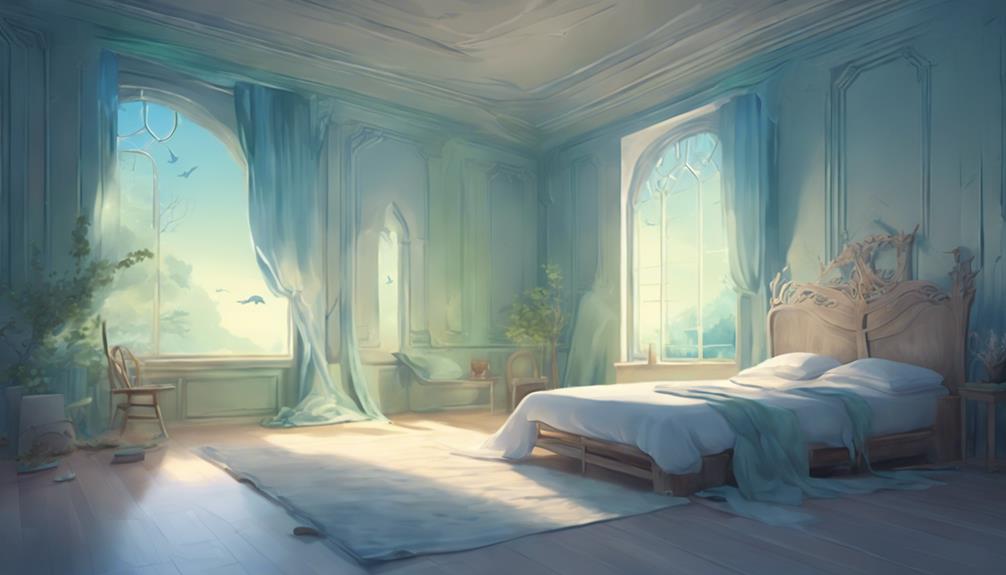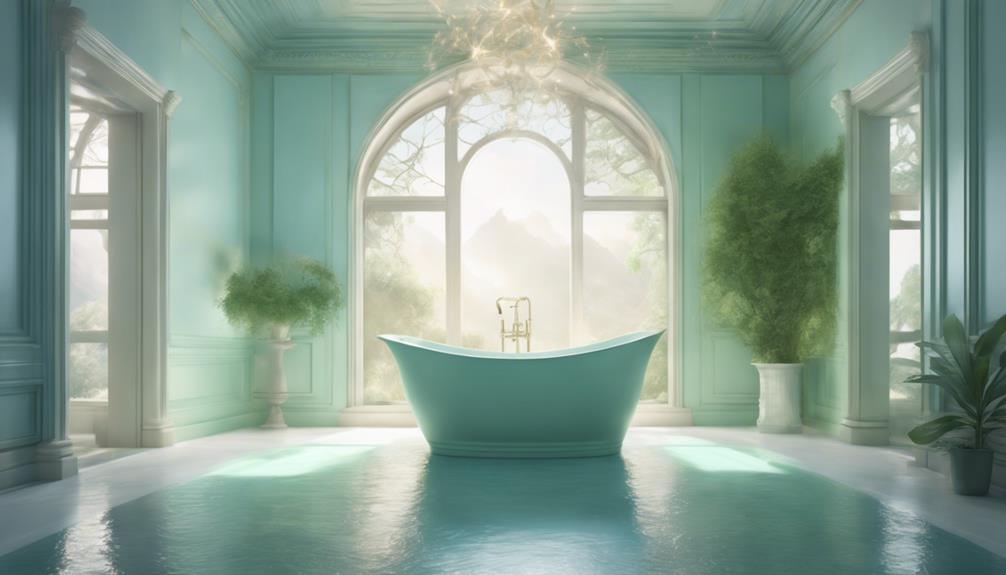Summary
- 1 Understanding the color theory of Feng Shui
- 2 Ideal colors for the living room
- 3 Choosing bedroom colors
- 4 Colors of the Kitchen and Dining Area
- 5 Best shades for the bathroom
- 6 Harmonious colors for the home office
- 7 Frequently asked questions
- 7.1 How does color affect the flow of energy in Feng Shui?
- 7.2 Can color combinations affect a home's overall energy balance?
- 7.3 What are common color mistakes in Feng Shui and how to avoid them?
- 7.4 How do personal preferences align with Feng Shui color recommendations?
- 7.5 Are there Feng Shui color guidelines for outdoor spaces such as gardens or patios?
In Feng Shui, colors can transform the energy of your home. For the living room, green can create calm, while yellow brings warmth. Bedrooms benefit from shades of blue and green for relaxation. In kitchen and dining room areas, reds and yellows increase appetite and joy. Light blues and soft greens make bathrooms serene, while white adds a fresh touch. For your home office, blues reduce stress, while greens and yellows increase energy and creativity. To truly harness the power of Feng Shui, you'll want to delve into the impact of color choices on each room.
Understanding the color theory of Feng Shui

Understand the color theory of the Feng Shui helps you harness the power of colors to create a vital and harmonious space. According to Feng Shui, each color corresponds to one of the five elements: Wood, Fire, Earth, Metal and Water. These elements are believed to influence your mood and energy levels. By using the right colors, you can evoke specific feelings and energies in your home.
Wood is associated with greens and browns, promoting growth and vibrancy. Fire, associated with reds and oranges, brings warmth and passion. Earth tones such as yellows and beiges provide stability and nourishment. Metal, represented by white and metallic colors, encourages clarity and precision. Finally, Water, which includes blues and blacks, offers calm and depth.
Understanding how these colors interact with each other is essential. For example, too much red could bring excessive heat, making a space feel oppressive. On the other hand, too much blue could create a cold, unwelcoming atmosphere. Balancing these colors helps you create a space that feels right. By carefully incorporating Feng Shui color theory, you can transform your home into a sanctuary of peace and positive energy.
Ideal colors for the living room
Now that you understand the basics of Feng Shui color theory, let's look at the ideal colors for creating a balanced and welcoming living room. When you choose colors, you want to encourage harmony and the flow of positive energy. Here is a quick guide to help you decide:
| Color | Effect |
|---|---|
| Green | Promotes calm and peace |
| Blue | Promotes relaxation and tranquility |
| Yellow | Invites warmth and happiness |
| Beige | Adds a neutral and grounding effect |
Green is an excellent choice for a living room because it symbolizes renewal and harmony. It can make your space more vibrant. Blue, known for its relaxing properties, helps create a serene atmosphere, perfect for relaxation and soothing conversations.
Yellow brings a sense of joy and energy, making it ideal for social gatherings and lively discussions. It can brighten your space and your mood. Beige and other neutral colors offer a versatile backdrop that supports other colors, helping to ground your living room and maintain balance.
Choosing bedroom colors

When choosing colors for your bedroom, it is important to choose shades that promote rest and tranquility. Feng Shui principles suggest opting for soft, muted shades that create a serene atmosphere. Think colors such as gentle blues, soothing greens and soft lavenders. These shades are known to reduce stress and promote a sense of calm, which is exactly what you need in a space dedicated to relaxation.
You might also consider warm neutrals such as beige or light gray. These colors are versatile and can create a welcoming environment without being too stimulating. The key is to avoid colors that are too bright or bold, as they may be too energizing and make it harder to relax at the end of the day.
Incorporating natural elements can also enrich the peaceful atmosphere of your bedroom. Soft earthy shades such as sage green or sand can put you in touch with nature, adding to that restful feeling. Don't forget the importance of balance; if you love a particular color but fear it will be too intense, use it as an accent instead of the main shade. That way, you can enjoy your favorite shades without compromising the tranquility of the room.
Colors of the Kitchen and Dining Area
Have you ever wondered how colors in your kitchen and dining area can affect your appetite and mood? In Feng Shui, the right shades can make a big difference in these spaces. Warm colors such as red, orange and yellow are known to stimulate appetite and create a lively atmosphere. You might consider adding these colors in small doses, such as through accessories or a feature wall, to avoid overloading the space.
If you aim for a calmer, more balanced environment, softer shades such as pale yellow, light green or even pastel blue can work wonders. These colors are believed to promote digestion and relaxation, making mealtime a more pleasant experience. Green, in particular, is associated with health and freshness, making it perfect for a kitchen.
In addition, neutral tones such as beige, cream or light gray provide a versatile backdrop that fits any decorating style. These shades can create a harmonious and welcoming space, allowing your culinary creations to take center stage.
Best shades for the bathroom

Choosing the appropriate tones for your bathroom can transform it into a peaceful and restorative sanctuary. In the Feng Shui, colors play a key role in establishing a balanced and harmonious space. For bathrooms, it is advisable to contemplate shades that evoke tranquility and order.
Light blue and light green tones are outstanding choices. These colors are associated with the elements of water and promote relaxation, which is ideal for a room where you start and end your day. I tones of delicate blue can make the space feel airy and wide, while the muted greens can bring a hint of nature inside, enriching serenity.
White is another popular option, representing purity and clarity. It can make your bathroom fresh and invigorated, providing a blank canvas for other ornamental elements. However, it is important to harmonize the white with warmer accents to keep the space from looking too sterile.
Natural shades such as beige and light browns can work effectively. These colors anchor the space and create a warm and welcoming atmosphere. Pair them with organic materials As wood and stone to amplify the overall vibration earthy.
Harmonious colors for the home office
While your bathroom thrives on soothing hues, your home office benefits from colors that encourage concentration and productivity. Choosing the right shades can make a difference in how you feel and work in this space.
In Feng Shui, certain colors are believed to improve concentration and creativity. Here are some suggestions:
- Blue: This color is known for its calming effect. Blue tones can reduce stress and help you stay focused on tasks.
- Green: Representing growth and renewal, green can create a balanced atmosphere. It is perfect for keeping you energized without feeling overwhelmed.
- Yellow: A cheerful and stimulating color, yellow can inspire creativity and optimism. It is great for brainstorming sessions.
- White: Clean and simple, white promotes clarity and organization. It can help you think more clearly and keep your workspace tidy.
When choosing colors for your home office, consider your personal preferences and the type of work you do. Don't be afraid to mix and match shades to create a balanced environment that meets your needs. Remember, the goal is to create a space where you feel both productive and comfortable.
Frequently asked questions
How does color affect the flow of energy in Feng Shui?
Color affects the flow of energy in Feng Shui by influencing mood and atmosphere. When you choose colors wisely, you can create a balanced and harmonious space that supports your goals and well-being. Each color has its own unique energy.
Can color combinations affect a home's overall energy balance?
Yes, color combinations can influence the overall energy balance of a home. Mixing colors thoughtfully creates harmony and positive vibrations. Avoid contrasting colors to maintain a peaceful and balanced environment throughout the living space.
What are common color mistakes in Feng Shui and how to avoid them?
A common mistake is to use too much red, which can create tension. Avoid this by balancing with more muted colors. Also, avoid dark, somber shades in living areas; they can drain energy and mood.
How do personal preferences align with Feng Shui color recommendations?
Your personal preferences can align with feng shui by mixing your favorite colors with recommended shades. It's all about balance. You don't have to sacrifice what you love; incorporate it harmoniously within the principles of feng shui.
Are there Feng Shui color guidelines for outdoor spaces such as gardens or patios?
Yes, there are feng shui color guidelines for outdoor spaces. Green is recommended for growth, blue for tranquility and red for energy. Consider the elements and balance to create a harmonious environment.
